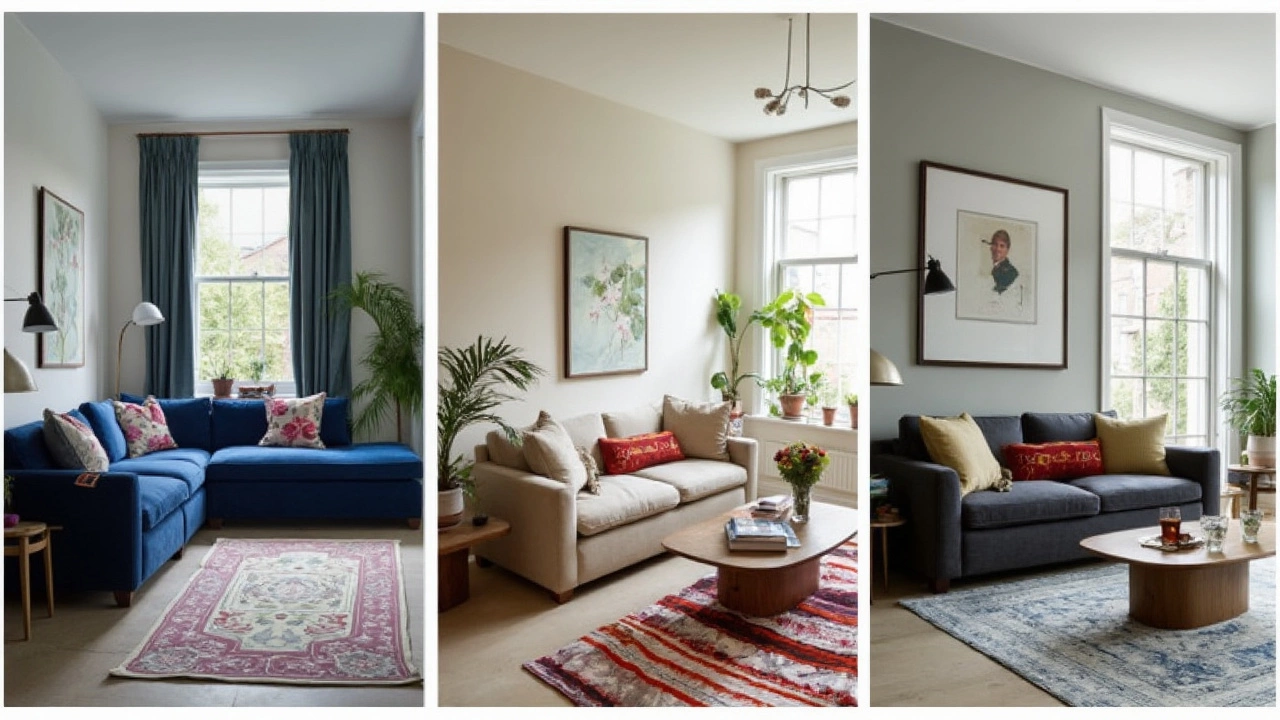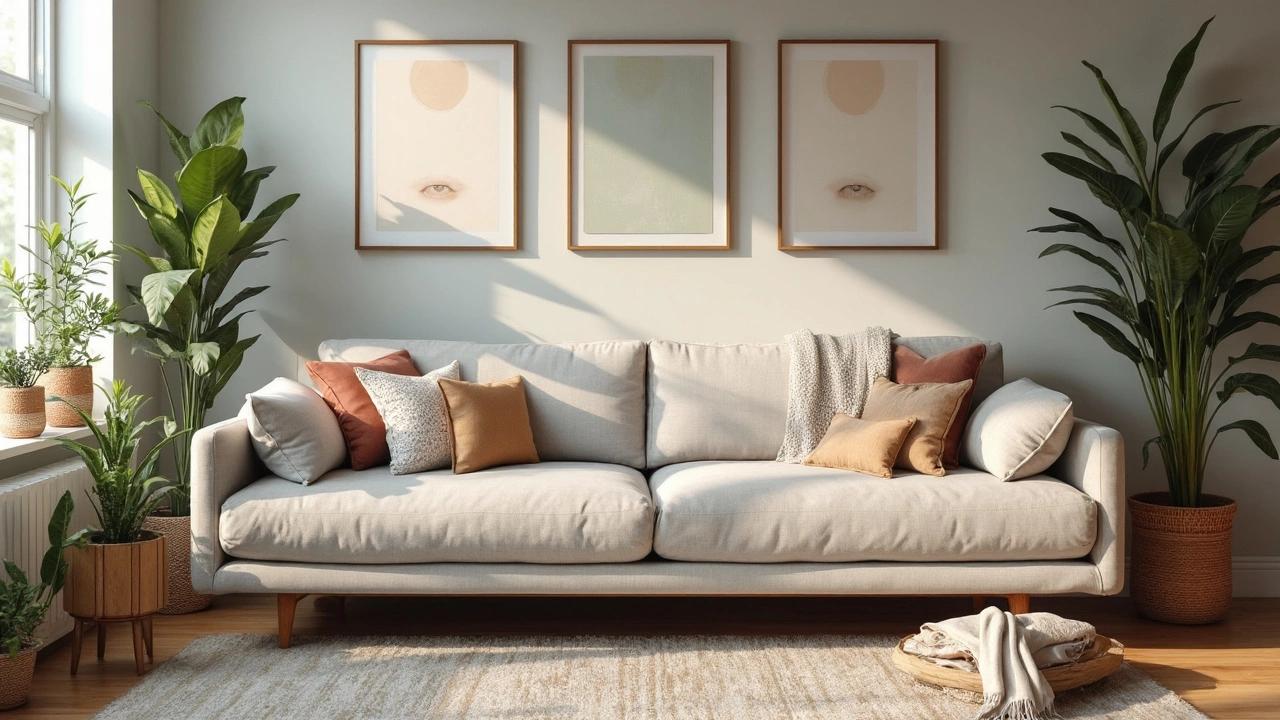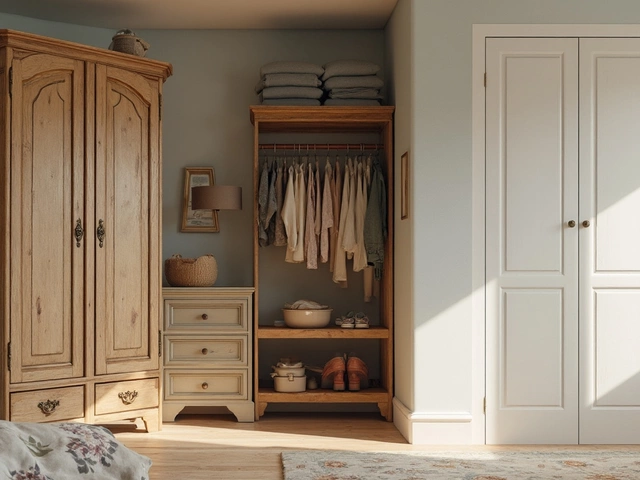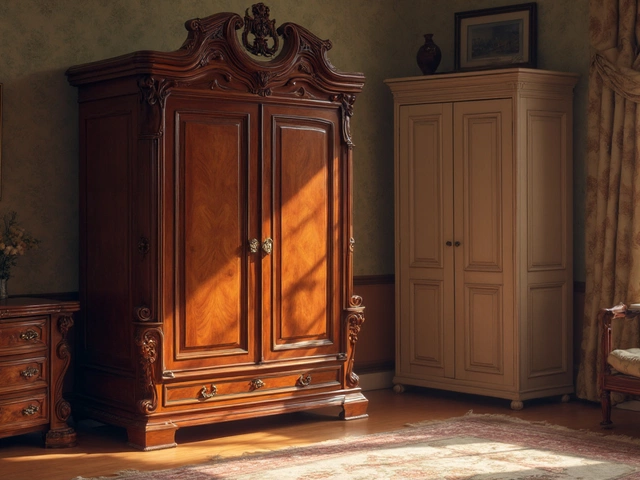If you’re staring at a sea of sofa swatches, it’s easy to get stuck. Pick the wrong color and you’re stuck with a giant reminder every time you walk in the room. But what’s that magic color that just seems to go with, well, everything?
Oddly enough, some colors just get along with any wall paint, rug, or throw pillow. They work whether you’re into Scandinavian calm or you love bright, wild accents. Think of them as the jeans of the furniture world—they’re comfy, reliable, and almost impossible to mess up. But which ones are they?
Before you splurge, it’s smart to know exactly which tones play nice with changes in your style, season, or even your mood. You don’t need to be an interior designer to get it right—you just need a few straight facts and some real-life advice. So, let’s cut through the confusion and find out what couch color seriously gets along with everything else in your space.
- The Timeless Winners: Which Colors Always Work
- Why Neutrals Lead The Pack (And When They Don’t)
- Real-World Tips To Make Any Couch Blend In
- Mistakes To Dodge When Picking Your Couch Color
The Timeless Winners: Which Colors Always Work
Let’s get straight to it: the safest bets for a couch that’ll outlast any trend or wild color phase are the tried-and-true neutrals. If you’re after a living room that always feels pulled together, stick with these simple shades: gray, beige, cream, greige (yep, that’s gray-beige), and navy. These winners keep your space looking sharp, no matter if you change up walls, artwork, or toss pillows every year.
Here’s why these shades just never clash. Neutrals play nice with every color under the sun. Swap out your rug, hang up new curtains, or go wild with bold accent chairs—these sofas still hold up. Plus, they keep your room feeling light and open instead of weighed down by colors that fight for attention.
Check out how the most popular couch colors rank for versatility, based on a 2023 survey by a major furniture retailer:
| Color | Percent of Designers Who Recommend | Best For |
|---|---|---|
| Gray | 82% | Modern or classic spaces |
| Beige | 76% | Cozy, bright rooms |
| Cream | 68% | Light, airy looks |
| Navy | 61% | Adding some contrast |
| Greige | 54% | Flexible with both cool and warm accents |
Wondering why you don’t see black or white leading the pack? Black can show lint and dust, and a white sofa is just one spilled coffee away from regret. Navy, though not a true neutral, is a favorite because it hides dirt and still acts as a smart, serious backdrop for everything from neon art to soft, natural woods.
When you’re out shopping for sofa color options, grab swatches and hold them up in your own space. Look at them in daylight and at night. If you want a ‘set and forget’ kind of couch, these shades really do work for almost everyone and every style.
Why Neutrals Lead The Pack (And When They Don’t)
Ask around at any furniture store and you’ll hear the same tip: go neutral. There’s a reason designers and folks buying new sofa color choices keep coming back to colors like grey, beige, cream, and off-white. They’re the big hitters because they match just about anything you can throw at them—bright art, patterned rugs, or any kind of pillow you want to swap in and out.
But this isn’t just a theory. A survey by Furniture Today in 2023 showed that over 63% of people picking a new couch went with a neutral color first. That’s a serious majority. Why? Neutrals don’t box you in. If you get bored of your decor or just want an easy refresh, you can just change up the smaller stuff around your couch. The couch stays, and everything else can rotate around it.
| Popular Neutral Sofa Colors | Matches Most Decor Styles? | Easy to Clean? |
|---|---|---|
| Light Grey | Yes | Medium (shows less dirt) |
| Beige | Yes | Medium |
| Cream/Off-White | Yes | No (shows stains) |
| Charcoal | Yes | Yes (hides dirt) |
So where’s the catch with going neutral? First, some people find it boring if every piece in the room is one soft color. If your space doesn’t get much sunlight, off-whites and light greys can sometimes look flat or cold. Also, if you have young kids or pets, those lighter neutrals can be a magnet for snack stains and paw prints. There’s nothing worse than realizing your beautiful beige sofa now has a permanent grape juice badge.
- In rooms with wild, colorful walls or floors, a neutral balances things out.
- If your style is always changing, neutrals give you the most freedom.
- But if you love bold looks, your space might feel too bland with only neutrals—mix in pattern or color somewhere else.
Bottom line: neutrals are a safe bet for almost everyone, but don’t feel pressured to stick to them just because everyone else does. There’s always room to break the mold if that suits you better.

Real-World Tips To Make Any Couch Blend In
Getting your couch to fit in is all about the details—what you pair it with, how you light the room, and the little extras you throw on top. It doesn’t matter if you went with a classic beige, cool gray, or even a subtle green. The trick is to think beyond just the couch itself.
Start with layers. Toss on a couple of throw pillows or a blanket in colors pulled from your rug or curtains. This keeps everything feeling intentional—not like you just dropped a random piece into the middle of the room. Here’s a practical move: use three tones—one from your sofa, one from your walls, and one little pop that ties them together. Designers lean on this trick all the time because it’s pretty much foolproof.
Don’t ignore texture. If your sofa color is plain, mix in chunky knits, basket-weave throws, or patterned cushions. This adds depth without demanding a full-on redecorate. Got a fabric or leather sofa? That texture can help hide stains or pet hair, too. In fact, a 2024 survey found that 67% of homeowners prefer textured upholstery for its durability and low maintenance—something worth thinking about if you’ve got kids or pets.
Lighting is another make-or-break factor. Natural light pulls out different undertones in your sofa during the day, while warm bulbs at night give everything a cozy vibe. Test out a lamp or two and move them around before you commit to an arrangement. This is a cheap hack and can totally change the look of your living room.
Using rugs wisely helps ground your sofa—and connects it to the rest of your furniture. Try setting the front legs of your sofa on the edge of your rug; it naturally pulls everything together without making the space feel crowded.
- Stick to a simple color palette: two or three strong colors is usually enough.
- Use repeated patterns or shapes (like round pillows, round ottoman) to create harmony.
- Rearrange artwork or photos so their colors bounce off your couch shade.
- If you love bold walls, pick couch cushions in lighter, neutral tones to keep balance.
- Add a houseplant nearby for a splash of natural green—plants go with every style.
| Accessory | % of Households Using It | Main Benefit |
|---|---|---|
| Throw Pillows | 81% | Easy color updates |
| Textured Blanket | 64% | Adds depth |
| Area Rug | 76% | Connects furniture |
| Lighting | 71% | Highlights colors |
| Houseplants | 59% | Freshens look |
You don’t have to get everything right straight away. Mix things up, see what actually feels good when you come home, and trust your eyes more than the showroom displays. In the end, the best trick is to keep things relaxed and open to change.
Mistakes To Dodge When Picking Your Couch Color
If you think picking a sofa color is just about what looks good in the showroom, think again. Plenty of people get stuck with a couch that clashes with everything or just feels off. Here are the big mistakes that trip up most folks, and more importantly, how you can sidestep them.
First, don’t chase trends too hard. That millennial pink craze? Looked fun on Instagram, but in real life, it boxed people in. Stats from furniture retailers in 2024 showed that over 60% of returned sofas were in "trendy" colors. If you want something that lasts, you’ll regret going with whatever’s blowing up online.
Another common goof: ignoring lighting. A couch can look perfect in a bright store but totally different at home. Natural vs. artificial light sways color tones a lot more than you’d expect. Always try to get a fabric sample and check it at home, during day and night both. Little detail, big difference.
Don’t underestimate how much pet hair, kid spills, and daily use show up on certain colors. White looks amazing if you live alone and never snack on the sofa, but dark colors like navy or charcoal hide stains and fluff much better.
- Buying for the room you want, not the one you have: Daydreaming is great, but if your living room is all warm neutrals, a cool-toned couch will stick out, not blend in.
- Forgetting accent colors: If all your throws and rugs are bold, a bold couch just adds to the chaos. The trick is contrast, not repetition.
- Going too matchy-matchy: Match all your furniture colors and the room gets boring fast. Without some contrast, there’s zero character.
It also helps to check out what stains and wear actually look like on different fabrics and colors. Here’s a quick look at how common colors hold up in real homes:
| Couch Color | Stain Visibility | Shows Pet Hair? | Fades in Sun? |
|---|---|---|---|
| Light Gray | Low to Medium | Medium | Low |
| Navy Blue | Low | High (for light pets) | Medium |
| Beige | High | Low | Medium |
| Charcoal | Low | Medium | Low |
| White | Very High | Medium | High |
Skip these tripwires, and picking your dream couch color gets way less stressful—and you’ll actually like what’s sitting in your living room a few years from now.





